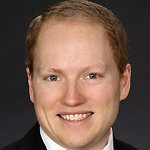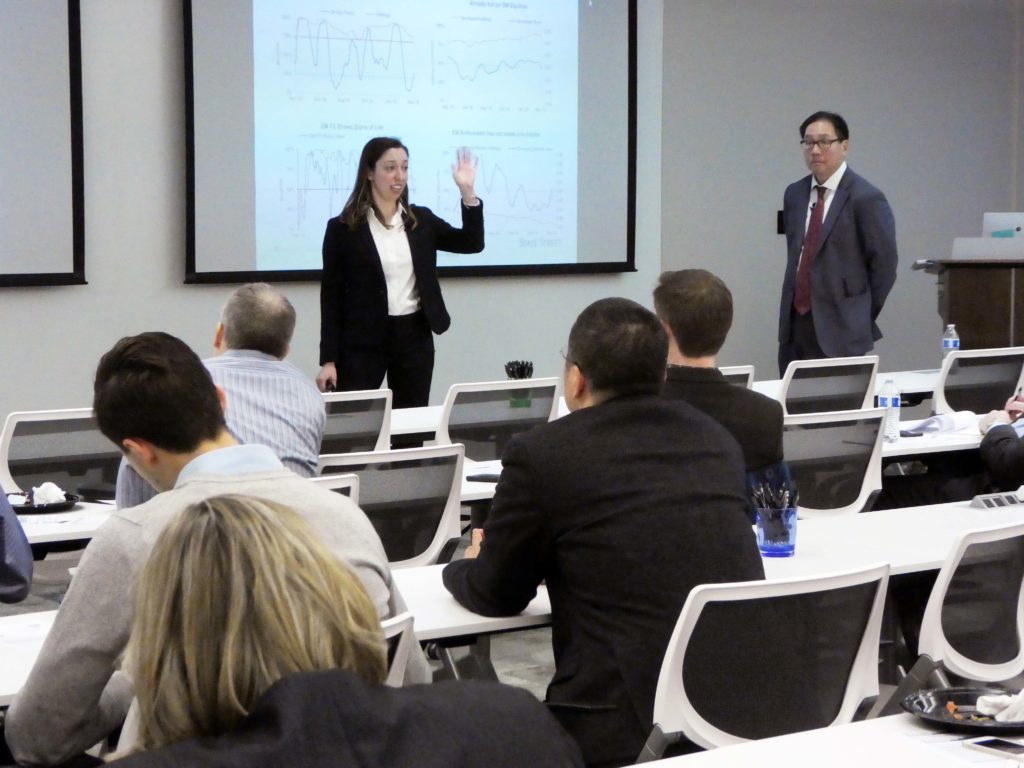
Did you know that our name CFA Society Minnesota only tells 90% of the story? While the bulk of our membership indeed resides in the Twin Cities, we have healthy and thriving communities in Sioux Falls, South Dakota and Fargo, North Dakota. This broad footprint provides great opportunities to put investor’s first around the region.
Carol Schleif, CFA, Diane Senjem, Mark Salter and I took a trip up I-94 to the City of Far More, spending a day and a half in Fargo with Society members, local investment industry leaders, and students from North Dakota State University (NDSU). The centerpiece of the trip was the second annual rendition of “Navigating the Financial Markets,” a joint event between NDSU and the Society. About 200 current and future leaders watched as Jim Bianco, CMT tried to convince all that expansions get murdered instead of dying a natural death, Matthew Finn, CFA reflected on current versus future state of the industry, and Carol Schleif, CFA discussed having a long-term focus and gave ideas on hard vs. soft skills.
Prior to the keynote event we were invited to a meeting between the NDSU Bison Fund and their advisory board. Students in the Bison Fund manage a series of multi-asset investment portfolios, spending most of their time on in-depth bottom’s up equity research. Sitting through the meeting I came away impressed by the commitment of the faculty, advisory board and students, and I found myself reminiscing about my own experiences in a student run fund … twenty years ago in Fairbanks, Alaska. I must say that these students are much better prepared than I was at that stage of life, and I made myself a note to see how I might be able to give guidance to my old fund now that I’m on the other side.
To wrap up the first night we were joined for dinner by members of the Bison Fund, faculty at NDSU and leaders in the investment community. The good food brought people together, as is often the case. As we settled in, we shared our experiences, provided thoughts on the future of the industry, listened to struggles of taking path A or path B, and harkened back to the day when we faced those same crossroads.
On the second day we invited a smaller group, comprised of CFA Charterholder members and candidates, to breakfast to discuss global, regional and local CFA Charter Initiatives. The group also touched on ways to further the CFA Charter in Fargo and Sioux Falls including additional program opportunities and efforts to increase awareness and the candidate pipeline.
To close our time out west, Carol met with a group of young women who started a Women in Business Club at NDSU hoping to get to 10 attendees. They blew away that initial goal and have 80 members; the future is bright!
Our mission – advance professional excellence while promoting ethical behavior and fellowship through development and engagement opportunities for our members – is critical no matter where CFA Charterholders reside. While it is challenging to connect across the vast landscape, we are always up for a challenge!
If any of the above commentary sparks an interest in you to connect with our friends in the Dakotas, or if you reside in any of these areas and would like to learn how you can help out, please send our Executive Director, Mark Salter a note at executivedirector@cfamn.org
-Tom







